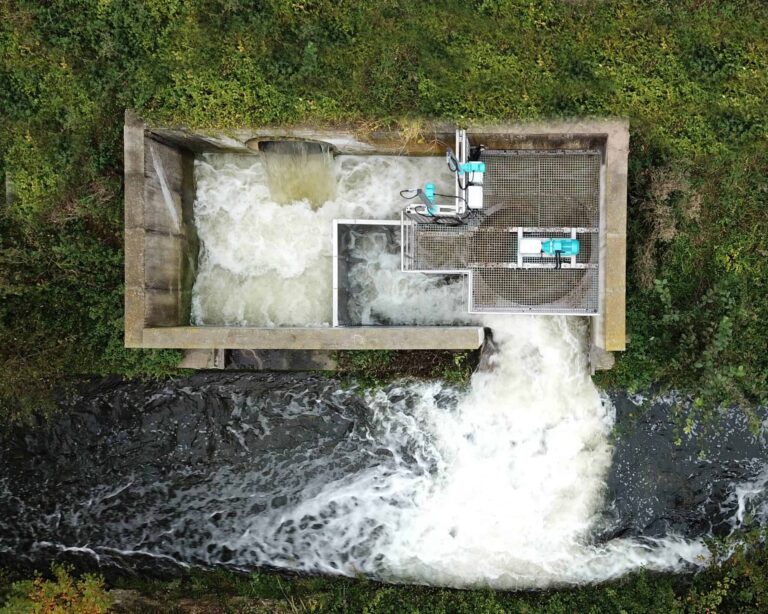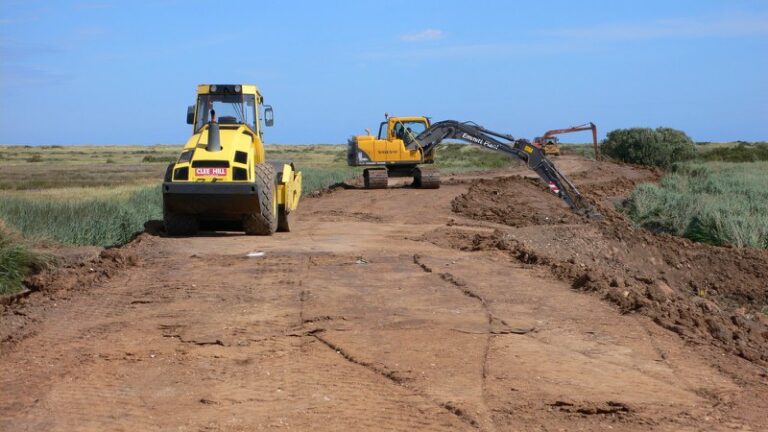Managed realignment generally involves setting back the line of actively maintained defences to a new line, inland of the original or preferably, to rising ground. Doing so should promote the creation of intertidal habitat between the old and new defences.
In most cases, the objective of realignment is to create saltmarshes. Saltmarshes develop between mean high water springs (MHWS) and mean low water springs (MLWS), in areas shaped predominantly by tidal processes and where silts and mud are predominant.
The Process of Managed Realignment
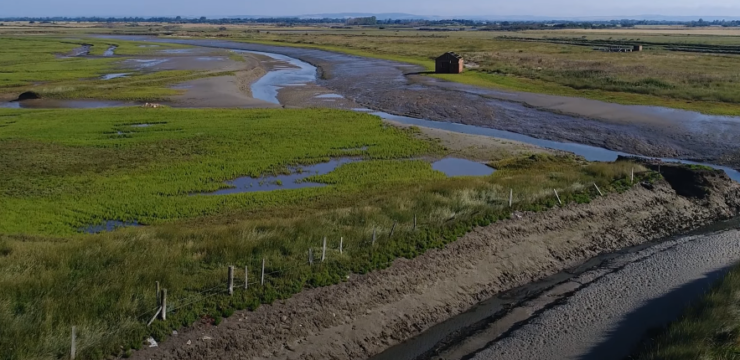
The benefit of creating intertidal habitats lies in the fact that they are highly effective at attenuating wave energy. This helps to reduce offshore sediment transport and therefore erosion. Intertidal habitats also form dense root mats which increase the stability of intertidal sediments, helping to reduce erosion rates.
This section uses the creation of saltmarshes through managed realignment as an example because, to date, the managed realignment approach has only been applied in North-West Europe and North America, where saltmarshes are the dominant intertidal habitat.
There appears to be no reason why creation of other wetland habitats, such as mangroves, should not be possible through realignment, although such an approach has not been undertaken to date.
Studies on saltmarshes have shown they are capable of attenuating up to 97% of incoming wave energy depending on the width of the marsh.
This can have highly beneficial implications for coastal protection. For example, if defences are realigned to an inland location, the presence of intertidal habitats can greatly reduce the cost of installing and maintaining protective measures.
Effect of Saltmarshes on Required Seawall Standards and Consequent Costs

Managed realignment may involve deliberate breaching or the complete removal of a current coastal defence. The process can be planned through abandonment or relocation of existing defences or unplanned through abandonment of defences if, for example, financial resources for maintaining defences are not available.
In order to undertake managed realignment, a number of conditions must be present. Six of the most important conditions are given below:
- Presence of coastal defences
- Availability of low-lying land
- Desire or need to improve flood or coastal defence systems
- Presence of a sustainability-oriented coastal management attitude
- Desire or need to create intertidal habitats
- Societal awareness about the benefits of managed realignment
The Advantages
The benefits of this approach are quite numerous, and being fully aware of them gives a much better idea on what you can expect:
| Advantage | Explanation |
|---|---|
| Reduced coastal defense costs | Decreases the need for extensive and strong hard defenses due to reduced wave energy. |
| Lower maintenance costs | Saltmarshes reduce wave energy, cutting down defense maintenance costs. |
| Enhanced natural flood and storm buffering | Natural habitats improve the coast’s ability to handle floods and storms. |
| Improved long-term sustainability | Uses natural systems to enhance the sustainability of coastal defenses. |
| Increased resilience to climate change | Offers robust protection against unpredictable climate changes. |
| Carbon sequestration | Intertidal habitats capture and store atmospheric carbon in sediments. |
| Restoration of natural habitats | Reverses declines in intertidal areas caused by human development. |
| Support for biodiversity | Supports diverse flora and fauna, including birds and marine life. |
| Promotion of recreation and ecotourism | Attracts activities like walking, sailing, and bird watching. |
| Improved water quality and resource management | Helps maintain water quality and manage resources. |
The Disadvantages
The disadvantages can be equally as numerous as advantages. Fortunately, they can be avoided if the project manager pays a close attention to all the scenarios and takes all the factors into consideration. Here are the most important ones:
| Disadvantage | Description |
|---|---|
| Land Requirement | Requires sacrificing land, potentially for costly infrastructure relocation. |
| Political and Social Controversy | High controversy due to public reluctance and historical value of the land. |
| Multiple Land Owners | Complicated by the involvement of numerous landowners, necessitating negotiation. |
| Cost and Disruption | Relocating or abandoning infrastructure is disruptive and expensive. |
| Potential Isolation | Abandoned infrastructure might lead to isolation and increased poverty. |
| Agricultural and Historical Conflicts | Creates tension between wetland creation and preserving agricultural/historical sites. |
| Food Security Concerns | Reducing agricultural land may impact local food production and security. |
| Uncertainties | Approach is new with uncertainties about effectiveness and habitat establishment time. |
| Environmental Specificity | Success depends on specific conditions like low wave energy and sediment availability. |
As we’ve already pointed out, avoiding these is possible, therefore, undertaking this sort of project is a good way to go.
Financial Requirements and Costs
As no reference on the application of managed realignment in any developing countries has been found, the authors are unable to present cost information for the developing world. Developed country costs are instead presented to give some indication of costs and how they are likely to vary.
Rupp-Armstrong and Nicholls (forthcoming) state that the average cost of managed realignment in Britain is approximately US$97,000 per hectare (at 2009 prices), where construction of a new defence was also required.
However, the costs of managed realignment schemes can vary widely as a result of numerous factors outlined below:
- Cost of the land where managed realignment will be performed
- Requirement for compensation to land owners/occupiers
- The need to dismantle human-made structures present on the site to prevent marine pollution
- Requirement for and size of sea defences to protect the hinterland
- Availability and cost of human resources including expertise
Scale and Frequency of Monitoring
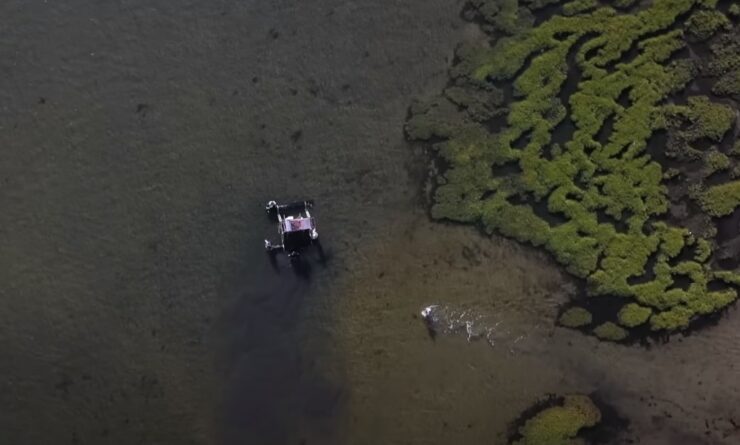
In developed countries, where experience of managed realignment is greatest, the main cost of managed realignment is usually the cost of purchasing the land to be flooded. This may differ in developing countries where land prices are not so high and may already be owned by the state.
Land costs can vary widely depending on the current landuse and as such, so too will realignment costs. As an example, agricultural land is usually less costly than land used for housing or industry, largely due to the presence of infrastructure. If land is used for housing or industry it may also be necessary to provide additional compensation for relocation.
Costs may increase further if it is necessary to dismantle human-made infrastructure present in the realignment zone. This may include structures such as buildings and roads, underground pipes for gas delivery or wires for electricity, internet or television, to name but a few.
Costs are likely to be lowest if existing defences are left to breach naturally. This saves money which would have been spent on the creation of artificial breaches. In Germany, the cost of realignment is seen as a major barrier to implementation of managed realignment, since the majority of the North Sea defences are in excellent condition (Rupp & Nicholls, 2002).
The scale of monitoring operations post-realignment will also influence costs. The more rigorous the monitoring schedule, the higher the likely costs.
Institutional and Organisational Requirements
Both planned and unplanned managed realignment could be achieved at the community level. Breaching or abandonment of defences is inexpensive and straightforward and is therefore unlikely to require the involvement of external organisations.
To obtain the greatest benefits from managed realignment, implementation must be more carefully planned. Pre-implementation monitoring and modelling will help to determine the effect of managed realignment and will help to maximise the benefits.
To avoid unwanted consequences of managed realignment, detailed planning and pre-implementation modelling studies will be required. These studies will furnish decision makers with information on how the scheme is likely to function and whether the full range of benefits will be realised.
Managed realignment schemes completed to date have used modelling to determine if alterations to the site before defence breaching, such as creek excavation or elevation raising, can encourage formation of beneficial features.
Additionally, pre-implementation modelling will provide information on environmental changes caused by the scheme, such as changes to estuarine ebb/flood dominance.
A higher degree of certainty regarding the behaviour of managed realignment sites can be gained through modelling but this activity is likely to require the involvement of external organisations.
It is essential that coastal managers involve stakeholders including local communities in the realignment planning process. Leggett et al. claim that effective stakeholder and local community engagement is essential to successful implementation of managed realignment schemes.
They also claim participation can help to:
- Understand legitimate concerns and interests
- Explain and convince the local community of a scheme’s merits
- Manage expectations
- Develop stakeholder ownership
Barriers to Implementation
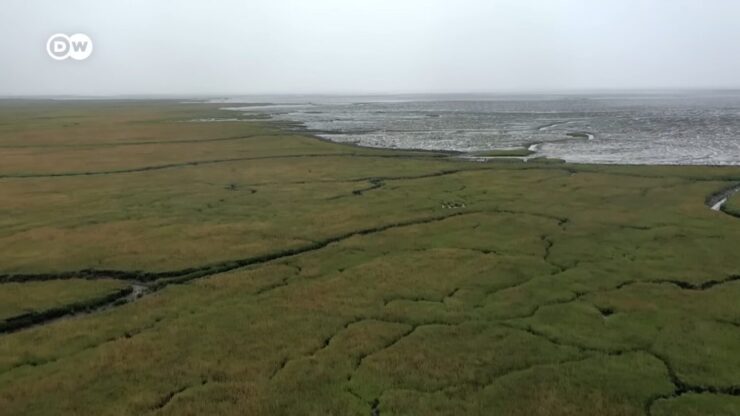
Managed realignment has primarily been a strategy employed in North-West Europe and North America, with its implementation barriers largely studied only within these developed regions. However, the obstacles identified in these areas are likely applicable globally, including in developing nations.
Researchers Rupp-Armstrong and Nicholls have extensively studied the main obstacles to managed realignment in countries such as England, Scotland, the Netherlands, and Germany. Their summarized findings highlight several key barriers:
- Public Acceptance: The foremost barrier is public resistance, often driven by the perception that land loss is a regressive action. High property values and development potential further exacerbate this reluctance to accept land loss.
- Benefits and Risks: Public skepticism is also fueled by a lack of understanding of how managed realignment effectively mitigates coastal flooding and erosion. Enhanced communication and stakeholder engagement are crucial to overcoming this barrier.
- Impact on Agriculture: Particularly in the mentioned countries, agriculture is significantly affected since realignment typically occurs on farmland. The primary issue here is the inadequate compensation for land loss, which, if addressed, might increase willingness among farmers to participate.
- Economic Costs: The financial burden of managed realignment is substantial, with costs in British examples averaging around US$97,000 per hectare. This includes expenses related to constructing new defense lines and relocating infrastructure.
- Legal and Financial Complexities: The process involves numerous coastal landowners, leading to complex legal and financial negotiations concerning responsibilities and liabilities.
- Land Availability: In densely populated coastal areas, finding alternative land for relocated infrastructure is challenging, representing a significant logistical barrier.
- Environmental and Geographical Requirements: The success of managed realignment depends on specific environmental conditions such as the availability of low-lying land protected by existing coastal defenses. Additionally, a sustainability-oriented management attitude and societal openness to the concept are essential.
- Conservation Concerns: In places like the UK, managed realignment risks damaging important or protected habitats, such as coastal grazing marshes, which are crucial for various species and biodiversity conservation.
Opportunities for Implementation
Managed realignment can be part of a ‘strategic’ shoreline management plan. These plans typically consider tens of kilometres of coastline in a holistic sense, and address a variety of needs within the targeted area. This approach is often seen as a desirable way to maximise benefits and overcome potential constraints.
Managed realignment can also help recreate intertidal habitats lost through human development and SLR. In this way, provision for coastal defence may be made but not at the expense of important intertidal habitats.
In some cases, legal obligations to offset previous and predicted losses of these habitats may exist – the managed realignment response could play a role in meeting these requirements.
Opportunities for the implementation of managed realignment may also occur as a result of more site-specific factors. These may include, the opportunity to reduce defence maintenance costs, opportunity to create a new nature reserve and the availability of funding for realignment.






